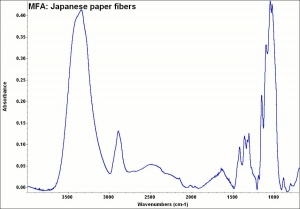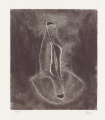Japanese paper
Jump to navigation
Jump to search
Description
A strong, hand-made paper composed of long bast fibers such as the Paper mulberry (Broussonetia papyrifera), the Gampi (Wikstroemia canascens) and the Mitsumata (Edgeworthia papyrifera). There are numerous types of Japanese papers. Thin, translucent sheets of Japanese paper are often used as a reinforcing paper and hinges because of their strength, flexibility, and permanence.
Synonyms and Related Terms
Japanese tissue; papier Japon (Fr.); kozo, mitsumata, gampi; gampe
Applications
Personal Risks
Collection Risks
Physical and Chemical Properties
Japanese tissues weighs 6-8 g/m2
For paper fiber properties see Kozo or Mitsumata.
Additional Images
Sources Checked for Data in Record
- The Dictionary of Paper, American Paper Institute, New York, Fourth Edition, 1980
- E.J.LaBarre, Dictionary and Encyclopedia of Paper and Paper-making, Swets & Zeitlinger, Amsterdam, 1969
- Matt Roberts, Don Etherington, Bookbinding and the Conservation of Books: a Dictionary of Descriptive Terminology, U.S. Government Printing Office, Washington DC, 1982
- A Glossary of Paper Conservation Terms, Margaret Ellis (ed.), Conservation Center of the Institute of Fine Arts, New York City, 1998
- Hermann Kuhn, Conservation and Restoration of Works of Art and Antiquities, Butterworths, London, 1986
- Marjorie Shelley, The Care and Handling of Art Objects, The Metropolitan Museum, New York, 1987
- Book and Paper Group, Paper Conservation Catalog, AIC, 1984, 1989
- Art and Architecture Thesaurus Online, http://www.getty.edu/research/tools/vocabulary/aat/, J. Paul Getty Trust, Los Angeles, 2000





